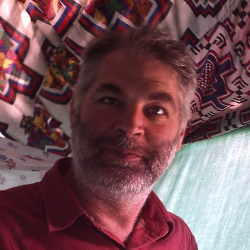Agra, Pradesh, India – October 5-7, 2024
-
Martin Hash

- Posts: 19179
- Joined: Wed Jan 20, 2010 2:02 pm
Agra, Pradesh, India – October 5-7, 2024
Agra is a city on the banks of the Yamuna River in the Indian state of Uttar Pradesh, 140 mi. SE of Delhi. With a population of 1.6 million, Agra is the 23rd most populous city in India. The name Agra came from the Hindi word “agar” meaning salt-pan; valuable salt used to be made there by evaporation. The golden age of the city began with the Mughals in the early 16th century when Agra was the foremost city of the Indian subcontinent, capital of their Empire, and was the center for learning, arts, commerce, and religion. Agra went into decline after the fall of the Mughal empire in the late 18th century to the East India Company of the British empire.
The bus trip from Jaipur to Agra was uneventful but when we arrived in the city it was during a large night market; very eerie.
The next morning we passed through an area that made small stone ceremonial pavilions & statuary, on the way to Abhaneri. Coincidentally, we arrived during a festival celebrating their 2 popular attractions: the Chand Baori step well, and Harshat Mata Temple. The place was more crowded than our Gigi had ever seen before. There were 100s of school children, some wanted to take selfies with the blond-haired females in our group, including Gwynne. No video cameras were allowed but videos taken by phone were ignored. The 2 sites were built in the 7th & 8th centuries. The step well, where the locals used to obtain water, was very impressive, 100 ft. deep with 3500 steps going both ways to accommodate a large amount of simultaneous foot traffic. Walking over to the temple, we passed dozens of children danced around a spinning umbrella, singing, and a man in a turban was hand-spinning a pottery wheel. The had been extensively damaged by the Mughals centuries ago; most of its columns & statues crudely reassembled or still lying scattered around on the ground.
Next, everyone was anticipating the Taj Mahal, “Crown of the Palace,” as we drove through town past many Western franchises. Upon arrival in the outside courtyard, we got a short history lesson; the Taj Mahal was constructed from 1632-1648 by Shah Jahan in remembrance of his beloved wife, Mumtaz Mahal, as a mausoleum for her & himself. The name "Taj" is derived from the corruption of the second syllable of "Mumtaz." At the time, its construction employed more than 20,000 workers & artisans. The whole complex is estimated to cost approximately $80 million in today’s money. It’s considered one the 7 Wonders of the New World, rightfully so; impressive ivory-white marble construction with lots of inlays of precious stones, and attracts over 5 million visitors a year. We were required to put paper covers on our shoes, and get in line to go inside to see the crypt & ornate coffins. It was very busy but the line moved quickly. Gwynne was wearing a turban she had bought at a souvenir shop earlier in the day. When we got back outside into the inner court abutting the river, a local man came up to her, took the hat off of her head, adjusted her hair back so it wouldn’t be visible, and replaced the hat; he then smiled and walked away without saying a word. We sat on a raised platform called the “Lady Diana Bench” where a local woman wanted to take a picture of Gwynne holding her baby.
The Tomb of I'timād-ud-Daulah, also built on the riverbank, and referred to by the tourist industry as the “Baby Taj,” is a Mughal mausoleum built between 1622-1628 for Mirzā Ghiyās Beg, the grandfather of the Taj Mahal’s dead occupant, Mumtāz Mahāl. Along with the main building, the structure consists of numerous outbuildings and gardens. We were required to remove our shoes to investigate, and we chose to climb barefooted up a destroyed staircase to the top of a defense tower. Back to the bus then a drive through downtown Agra, passing by a mixture of modern and past architecture.
The restaurant for dinner featured 2 female dancers that invited the guests to dance with them; both Gwynne & I took the opportunity to embarrass ourselves. Most of the women got henna applied to their hands, called mehndi in India, like a tattoo but eventually wears off. It stayed damp for a long time, and Gwynne got it all over the white sheets of our hotel bed; she thought tattoo was gone but it soon darkened and was visible for the rest of the trip.
The drive back to Delhi was the third leg of the triangle. We passed tall smokestacks and farm tractors pulling trailers loaded with bricks. We also passed miles of farmland interspersed by skeletal-looking high-rises. Our travel time on the freeway was stress-free but once we entered dense city traffic, it was very anxiety inducing, and took hours to arrive at the same hotel we had spent the first night in.
You do not have the required permissions to view the files attached to this post.
Shamedia, Shamdemic, Shamucation, Shamlection, Shamconomy & Shamate Change
-
C-Mag

- Posts: 28389
- Joined: Tue Nov 29, 2016 10:48 pm
Re: Agra – October 5-7, 2024
Do you have dysentery yet ?
PLATA O PLOMO

Don't fear authority, Fear Obedience

Don't fear authority, Fear Obedience